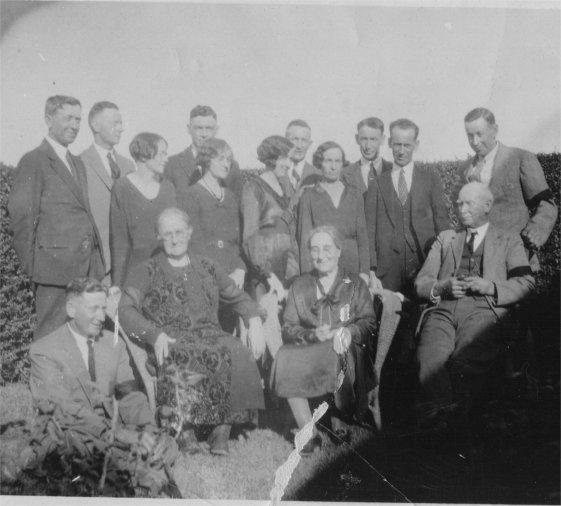THE KEATING STORY
Notes from a Broderick Reunion in the early 1970s

Mary Keating, who married Patrick Broderick at Shepparton in 1880, was the second child and eldest of six daughters of John and Honora Keating (nee Crow)
-
Mary -- born 1859 (Mrs. Pat Broderick)
-
Maggie (Mrs Bill Dwyer
-
Mrs Harry Bary, Ardlethan
-
Jule -- died of diphtheria
-
Nora -- died of diphtheria
-
Jack Keating, Berrigan (married Bridget Lander
Mary’s father, John Keating,
was born in in Tipperary, Ireland in 1834 and came to Melbourne in 1850
with his parents and two brothers and four sisters on the sailing ship
“Maitland” (presumably the ship of that name that was wrecked
at Maitland Bay (near McMasters Beach
-- where Bill and Val Broderick now live. One of the brothers was killed
by an Aborigine, being hit on the back of the head with a nulla nulla.
Soon after landing in Melbourne the Keatings journeyed to Hay, in the Riverina district of NSW, where John (and presumably his parents worked on “Tupra” station, then of some Hundreds of thousands of acres, on the north side of the Lachlan River, just upstream from the village of Oxley. “Tupra“ is still there, being now reduced to about 20,000 ha by a series of withdrawals of land after the two world wars for soldier settlement (and general settlement).
In the late 1940s, Dick Condon got to know the land forming these huge saltbush plains, when the Soil Conservation Service of N.S.W was offered one of the blocks taken out of "Tupra" expiring lease as research station. After mapping the soils and vegetation, and arranging for a huge supply of fencing posts, the Service abandoned the idea in favour of several experimental/demonstration areas in the Hay district, including one on “Ravensfield” about 50 km to the north-east of “Tupra”.
Leaving “Tupra”, John Keating worked on the diggings at Bendigo before taking up farming at Kyneton about 50 miles northerly from Melbourne, this also being the first stagecoach change station on the road north from Melbourne. Kyneton was dairying country and the story goes that the women used to carry buckets of milk into Kyneton on their heads.
Leaving Kyneton, John Keating selected land at Karamomus in the Euroa district, not far from Miepoll -- where mary Keating would have met up with Patrick Broderick, the Brodericks also farming near Miepoll. (see The Broderick Saga in this series.) In 1894 he was sharefarming with his son at Barooga on the north side of the Murray south of Berrigan. The Brodericks, Connels and Dwyers were also sharefarming in the same area. until the Keatings took up a farm near Berrigan in 1906.
John Keating died at the age of 96 on 11/06/1930 and is buried in the Berrigan cemetery. He was survived by his son, John W. Keating of “Tinda” Berrigan, Mrs. Pat Broderick (“Avondale”), Mrs Dwyer (Gunning Gap) and Mrs. Barry of Ardlethan.
John Keating’s obituary notice in the Berrigan Advocate (11/06/1930) makes no mention of the move to Karamomus where Mary keating would have caught up with Patrick Broderick before their marriage in Shepparton in 1880.
The Keatings were scattered over the country from Kyneton to Euroa and are reputed to have been one of the many involved in the building of the first Catholic Church at Euroa. (Renee Nugent Burns’ father, jack Nugent was church secretary at the time.)
Mary Keating Broderick died in Forbes in 1954 at the reputed age of 98, having lived for 95 years. Her brother John Keating of Berrigan, is reputed to have lived to 98 years. One of John Keating’s sisters married a Connell (previously O’Connell) and a daughter married William Dwyer. John Keating was thus a brother to Mrs Connell senior.